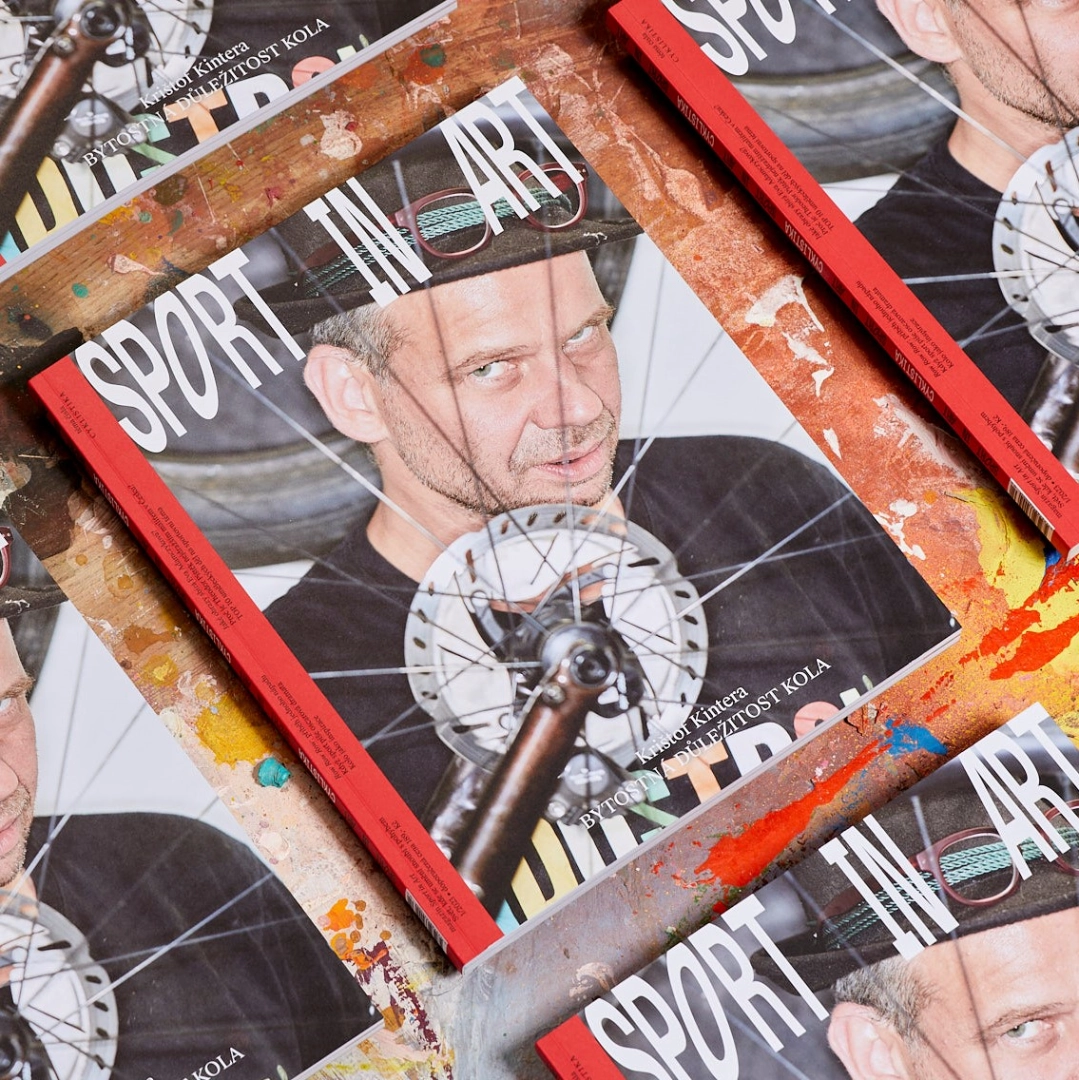Everyone kept saying: 'She's the one who photographs the Tour de France.' I was like Cinderella, defined by just one role. But that role was tied to a big, famous race, and I was the only girl in it. And that counts. It was tough, yet beautiful. Honestly, I never believed I’d last twenty-five years. I didn’t have such ambitions. It just happened. I never enjoyed cycling, maybe just from one pub to another. On the other hand, I’ve been into sports since I was a kid. I have medals from the national championships in gymnastics and tennis. When I look back, it’s strange. I played tough matches against people from the top fifty in the rankings, but it never crossed my mind that I could be the best.
YOU CAN PURCHASE MARKÉTA NAVRÁTILOVÁ’S PHOTOGRAPHS AS PART OF A LIMITED EDITION >>> VIA THIS LINK
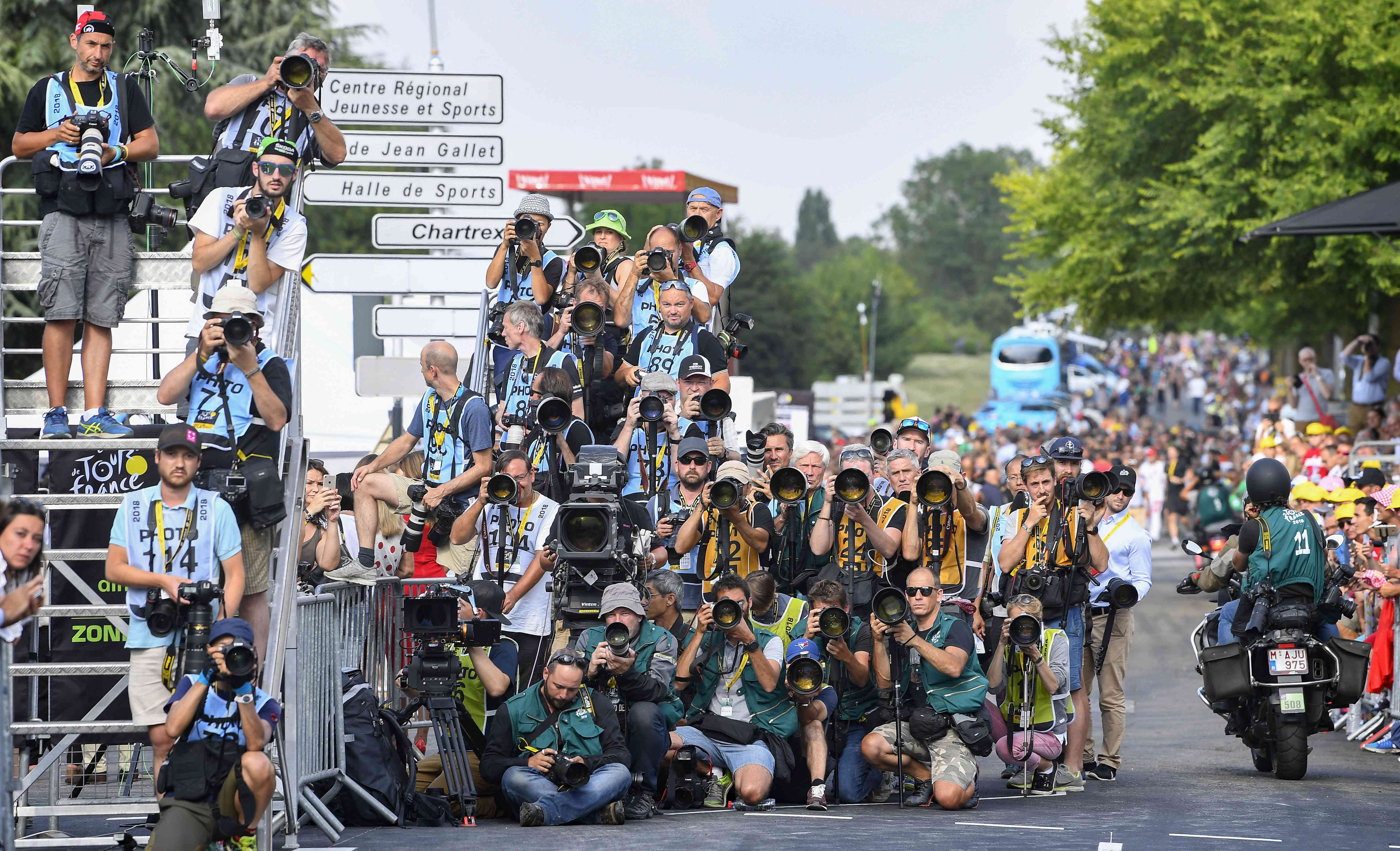
Also, because my dad kept yelling at me, saying I wasn’t good enough. He was determined to get me to the top, and often it involved physical punishment. Ironically, it was a crazy crash that set me free. In the winter of 1989, my friends and I went to Budapest to celebrate freedom, and near Malacky, we drove under a truck. A triple skull fracture, a wired-up mouth, a year of rehabilitation.
But my tennis background eventually came in handy. After the revolution, the Austrians were looking for skilled tennis players, and when I recovered, I played in their league for some really good money. What people here earned in half a year, I made in a weekend. Although I tried to escape my father’s influence, it was ironically him who determined my future when he took me to the Tour de France in 1992."
„
They said I photographed differently because I was a girl, but that wasn’t it.
That’s where I took my first shots, and it’s where I was noticed by the owner of an English agency, who gave me my first job and the opportunity to show my photos. A few years later, the Dutch agency Cor Vos became crucial. In 1997, they offered me a contract. At that time, I didn’t even realize that others would have given anything for that. This small agency is so established in the cycling world that it had a 'prepaid' right to one of the twelve motorcycles from which photographers are allowed to shoot the peloton. And I was the photographer, struggling with the fact that in a motorcycle helmet, I looked like something between a frog and an astronaut.
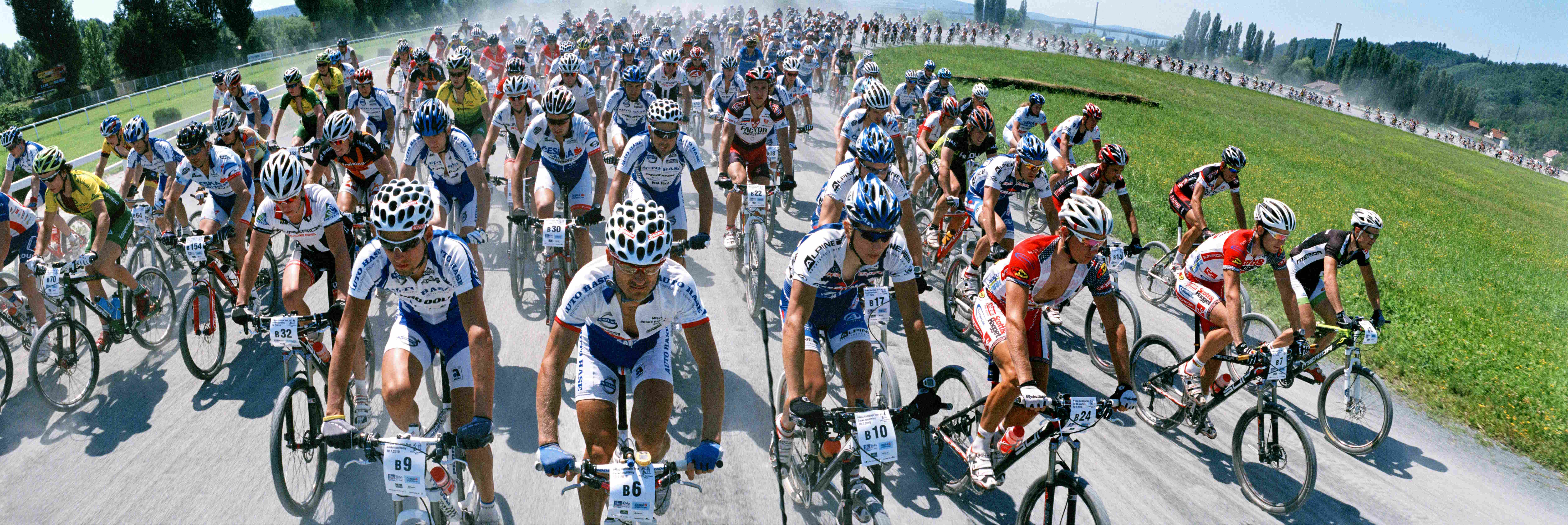
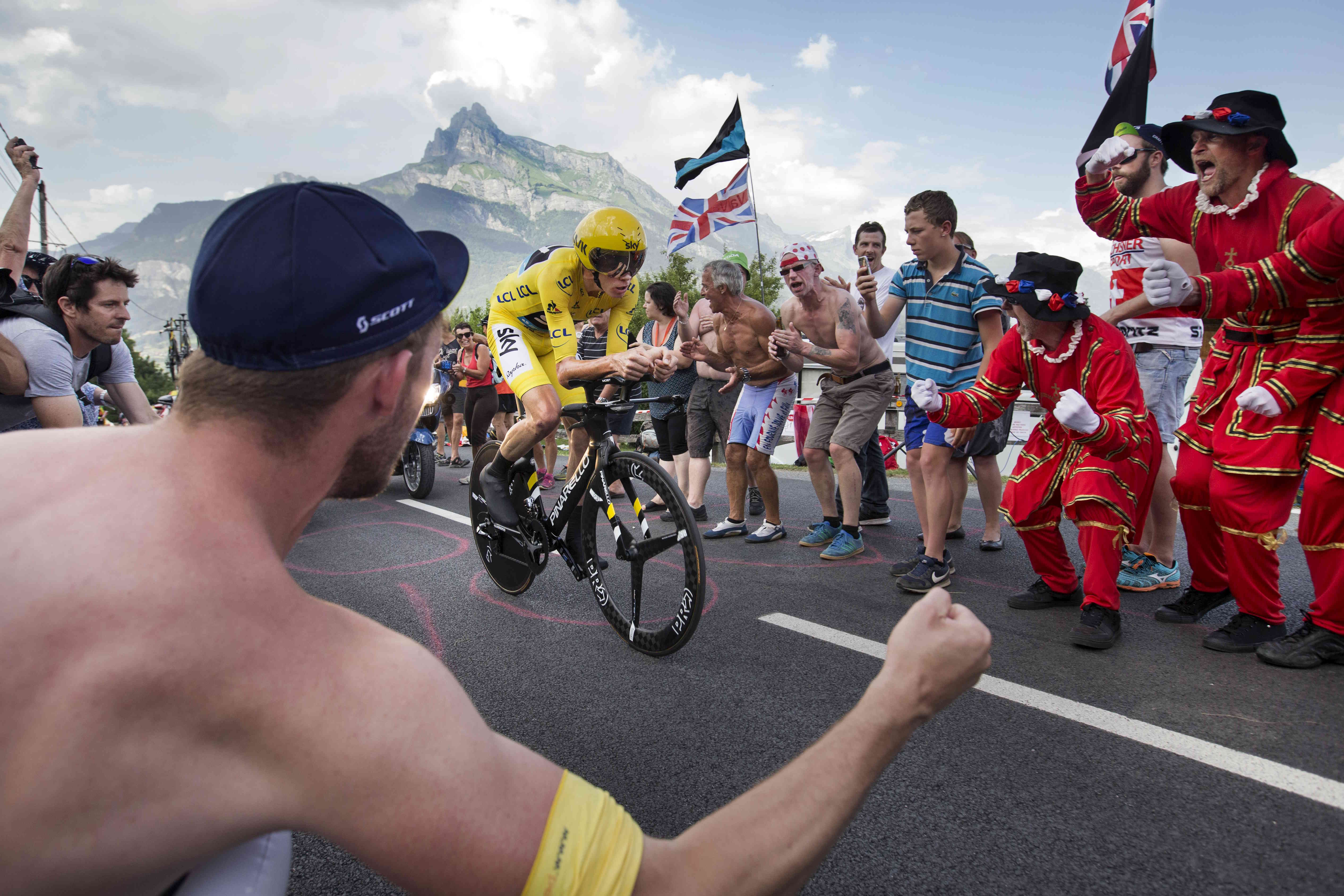
NARROWED VISION
I knew nothing about cycling. Maybe that’s why I had more distance from it from the start than those who stood next to me on the road like they were on hot coals, shouting the names of their idols, while I – with some exaggeration – could only recognize Ján Svorada and Miguel Indurain.
LARGE-FORMAT PHOTOGRAPHS BY MARKÉTA NAVRÁTILOVÁ ARE NOW ON DISPLAY AT GAME ON GALLERY IN PRAGUE >>> MORE HERE.
I was lucky that at the same time as the Tour, I got into the product design studio at Prague's UMPRUM. Design captivated me. To this day, I sit at home in a chair I designed myself. But the most important thing was that I got to meet interesting people, and I realized how narrow my vision had been because of tennis. Four hours of training a day, then running and rehabilitation. The only place I knew in Prague was Štvanice, and when they showed me the Rudolfinum and asked if I knew what building that was, I was lost. I didn’t know anything about life. So, I started catching up.
I can’t say that studying at an art school had any impact on my photography. I never tried to achieve Rembrandt-like chiaroscuro, nor did I wear a white scarf around my neck like bohemians. But when you're surrounded by an artistic environment, it enters you whether you want it to or not. That’s why I wanted to photograph differently.
WE'RE NOT THE BELLY BUTTON OF THE WORLD
Cycling is blood, sweat, and tears, and that’s what was expected of us. Agency grunt work. We all shoot from the same spots, we’re doomed to have similar shots. Somewhere deep down, I wanted it differently. But first, I had to take it all in. I was a twenty-three-year-old girl with long hair and shorts. An exotic. My colleagues, mostly top photographers, had to accept me, not the other way around.
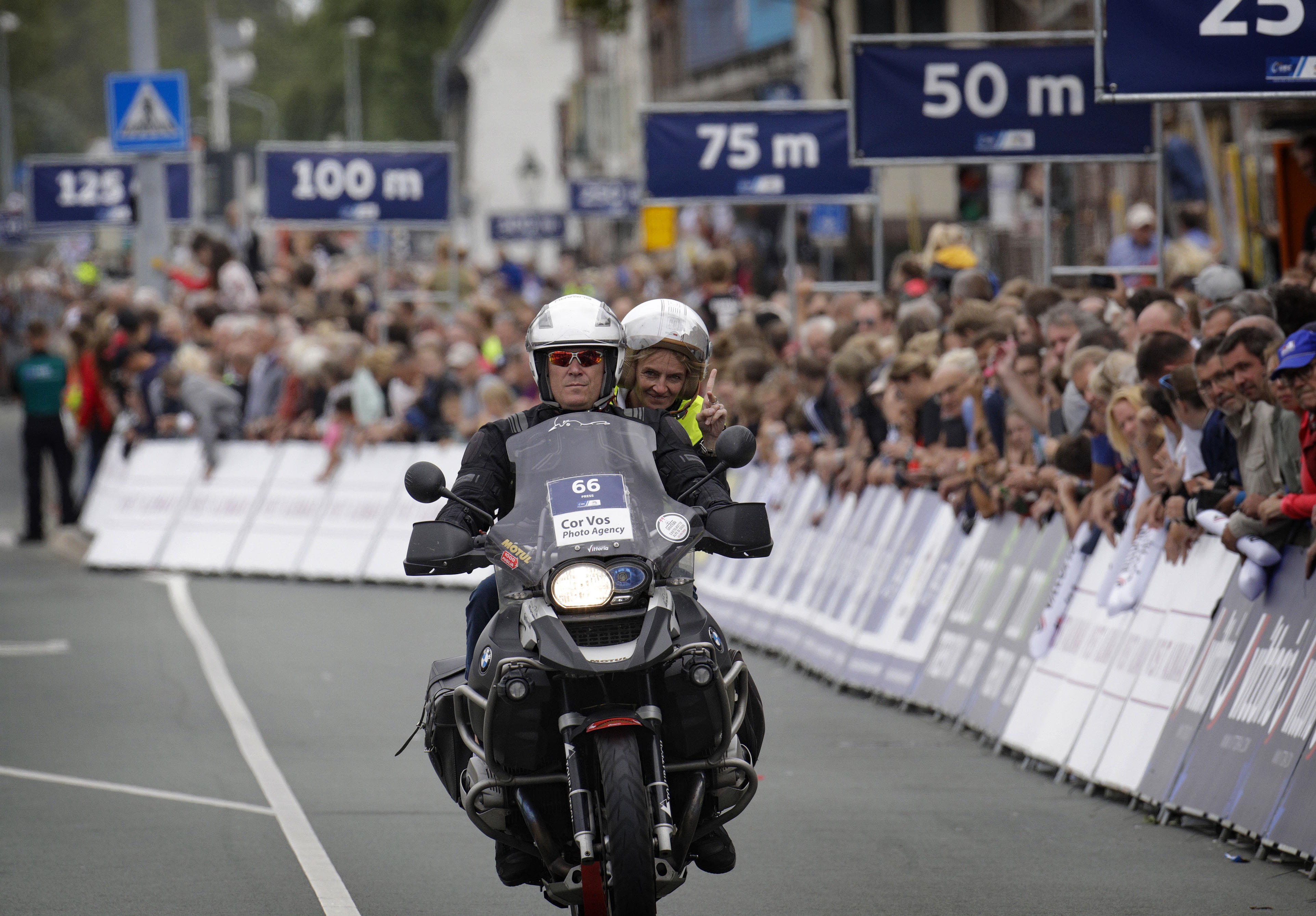
I wanted to do good work and compete with the best. I knew I could handle it because I was sure that technically and quickly shooting could be learned by even a trained monkey.
They said I photographed differently because I was a girl, but that wasn’t it. I don’t even know why it is this way, but a photo with a sweaty cyclist in the middle of it is too little for me. If the entire race took place on one stadium, it probably wouldn’t occur to me. But when you step back a bit, you can’t help but see the fantastic, ever-changing scenery in which the race unfolds. It would be a sin not to capture that scenery.
I never think about my photos hanging in a gallery. I respect the craft, the images that must have journalistic value. But when something turns out so well that it survives the day and becomes an image, that’s great.
The first truly great photo I made was during the Tour of Malaysia. I loved riding it because the race passed through exotic scenery. When the peloton raced by an unsuspecting man carrying bananas on a motorbike... Those contrasts fascinated me. And in Kuala Lumpur, a city full of skyscrapers, I captured the peloton through a reflection in a puddle on the sidewalk. It felt like too much abstraction, so I scanned it last for a submission to an English magazine. The editorial office was thrilled. That photo was then printed many times. I’d say it defined me.
In Malaysia, I also met someone who significantly influenced my life philosophy. It was the Italian photographer Paolo Pellizzari, whom I met at the Tour de Langkawi. At that time, he wasn’t famous yet. We got along well, started talking about everything, about life’s approach, about photography, how to think about it. And that was another thing that forced me to search for meaningful things completely elsewhere.
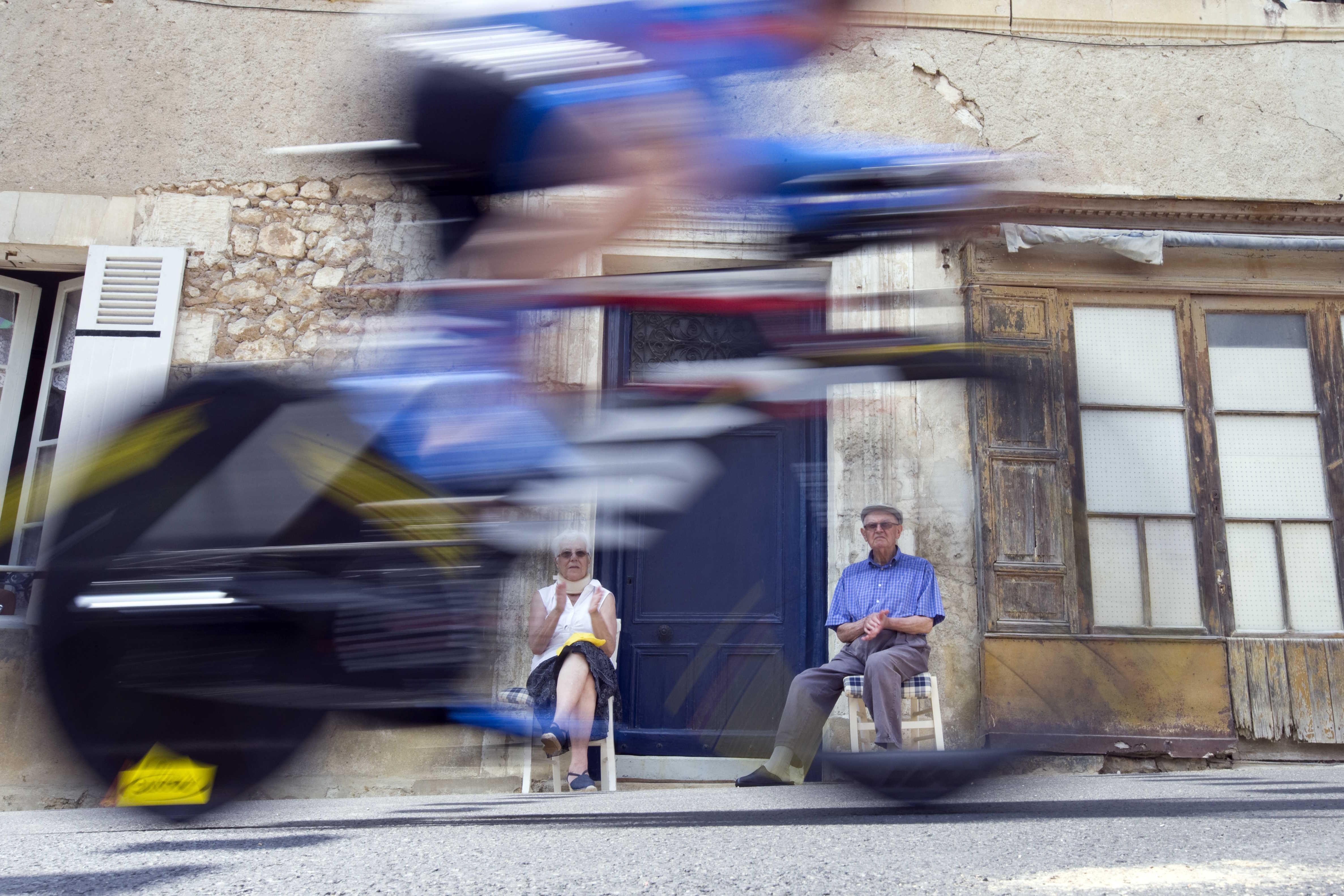
There’s another amusing story from the Malaysian race that illustrates my then view of the world, which, as someone who had traveled abroad only sporadically until I was eighteen, seemed infinitely vast. When I was asked if I wanted to go to Malaysia to shoot the race, I said: "Of course!" It was also an amazing opportunity for me to travel and discover countries I hadn’t even seen on a map. I’ll never forget walking into the Vienna office of Malaysian Airlines to pick up my flight ticket and seeing a big world map on the wall where Europe wasn’t in the middle but all the way to the left. It shocked me. At that moment, I realized we are not the center of the world, and that the world is not black and white.
PAIN
Cycling up close isn’t pretty. It’s a huge effort. The riders at the front are the favorites, they’re the ones who have it. At the end of the peloton, the outsiders slog along, looking completely transparent from exhaustion. I’ve always been interested in both groups. I was fascinated by the contrasting emotions. Cyclists race along flat terrain at fifty kilometers per hour, down hills at ninety. There are moments when it’s a matter of life and death. I would never put a photo of a bloody head on the asphalt in a book, I always wanted to show the more beautiful side. Even the Tour, I often felt more like poetry than a sport where you race to the blood. But in the end, as a journalist, you must fulfill your duty.
You can purchase the latest issue or subscribe to the print magazine for a year at a special rate here.

